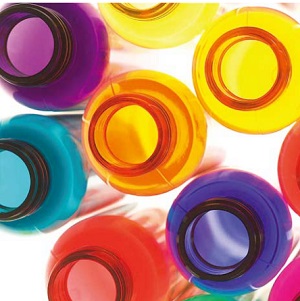The need for plasticizers is on a steady rise worldwide as manufacturers look to naphthalene derivatives to improve materials and chemicals with these additives. According to market research company, Ceresana, demand for this controversial but so far indispensable naphthalene derivative is set to increase to about 9.75 billion tons worldwide until 2024.
The global naphthalene derivatives market is anticipated by pundits to expand with a moderate CAGR in the projected period of a decade. Most of the prominent players in the industry are focused on geographical expansion, particularly in the emerging markets, and are also expanding or shifting their manufacturing bases, as per the demand dynamics in the market.
With the continued upsurge of construction projects worldwide, companies gear up to improve living standards with these dispersants.
Key players in plasticizer market include North America, Latin America, Western Europe, and Eastern Europe, Asia Pacific Excluding Japan (APEJ), Japan and Middle East and Africa (MEA). In the Asia-Pacific region, the emergence of a stronger middle-class Asian population has fueled a robust demand for fabrics and textiles with vibrant and lush colors adding to the continued growth of plasticizers. The plasticizer industry in Asia-Pacific accounted for about 59% of global demand in 2016. Predictions were set at about 6 million tons due to above-average growth ratesThe region is dominated by China and India in the demand for plasticizers in the textile and construction industries. These two markets are expected to show the biggest growth in the naphthalene market.
For the North American region and most of Western Europe, the cluster of textile and agrochemical companies account for more than 40% of the market share worldwide. Behind Asia, Western Europe ranked second in 2016 with 12.1%, followed by North America with 11.5%. Like China and India, the rising construction and fabric industry in MEA and Latin America are also anticipated to account for significant growth in consumption of naphthalene derivatives over the forecast period.
The voracious demand for plasticizers from the agrochemical industry, is also helping driving revenues in the global naphthalene derivatives market. For naphthalene derivative key players, the prime concern is raw material price volatility. This unpredictable nature governs revenues and margins for such industries. Another major concern is the toxic nature of most naphthalene derivatives. This concern creates a minor restraint to the global naphthalene derivatives market as manufacturers come up with new products to meet diverse processing needs. In 2007, the European Union (EU) issued a regulation restricting the use of certain additives from the plasticizers group that are used in food storage and childcare products.
The most important application area for plasticizers or naphthalene derivatives, such as naphthalene formaldehydes are plastic products. The naphthalene derivatives are processed to make brittle plastics flexible. Large amounts of plasticizers are also used to make elastomers, paints and varnishes and adhesives smooth. Plasticizers have always been favored by many industries for its important role in boosting the viscosity or plasticity of a material or compound. A variety of plasticizers are now available in response to the expanding and more complex requirements of processors. the class of organic compounds.
Naphthalene derivatives forms an integral part of process chemicals in many industries, especially in constructions, agrochemicals, textiles, detergents, paints and coatings. Formaldehyde derivatives of naphthalene, are the most common ones and are also used as a super plasticizer in the construction industry for concrete mixtures. A variegated range of deviates are also being used for paints and coatings. Moreover, naphthalene sulfonic acid and Naphthols are prominently used in the textile industry for manufacturing colorful dyes and pigment, which imparts color to various fabrics.

In 2016, 87% of all plasticizers were used for plastic-based products. These range from PVC items, films, cables, household goods, toys and even medical products. For soft PVC products, these range from floor coverings/linoleums, films, cable insulations, truck tarpaulins or insulating and sealing compounds. of properties. Films alone account for 2.14 million tons trailed closely by cables and profiles. Demand for plasticizers in the production of rubber products, paints and varnishes as well as adhesives is considerably lower. Until 2024, Ceresana expects the highest increases in plasticizer demand for cables and cable sheathing.
Since phthalates are considered as harmful to health and environment and were already banned from many applications, processors of plasticizers are increasingly looking for phthalate-free alternatives. According to Ceresena analysts, DEHP (bis(2-ethylhexyl)phthalate) was still the most frequently used plasticizer type in 2016 with 3.07 million tonnes used worldwide. About one third of this market was made up by the phthalates DINP (diisononyl phthalate) and DIDP (diisodecyl phthalate). It is predicted that DEHP will register below-average growth rates and will continue to lose market shares with stringent product regulations being enacted. In contrast to that, the analysts expect an increasing demand volume for DINP/DIDP and non-phthalates, which will develop at growth rates of 3.6% and 3.2% p.a. respectively.
sneakers













